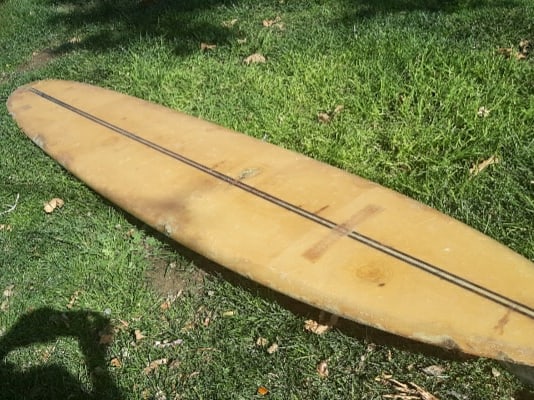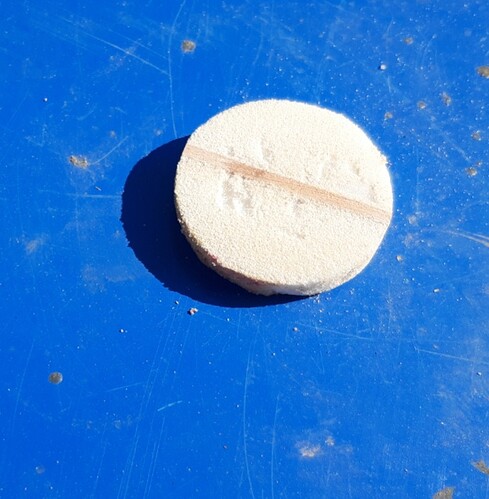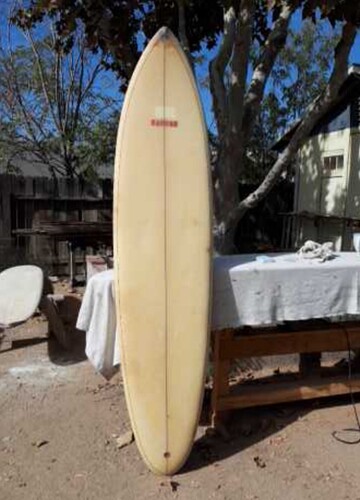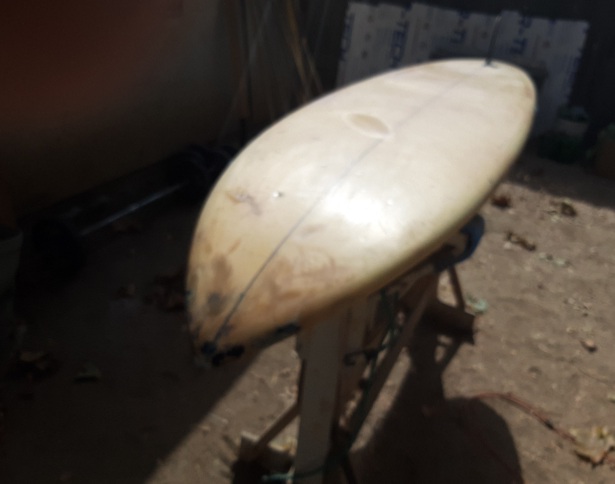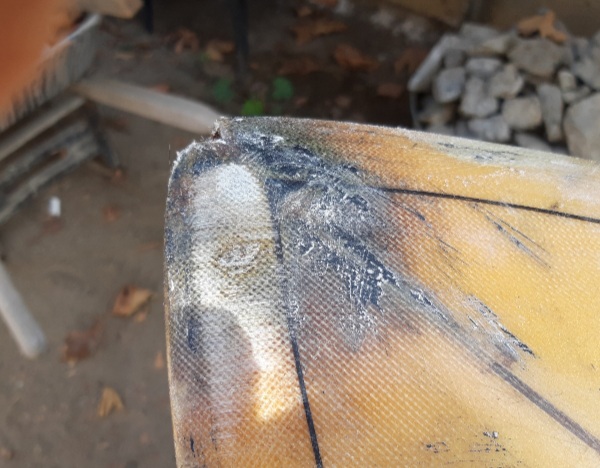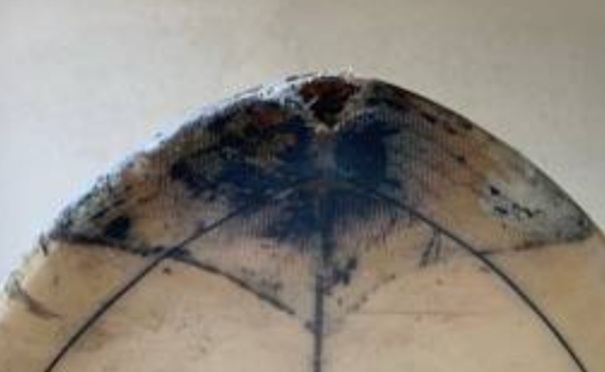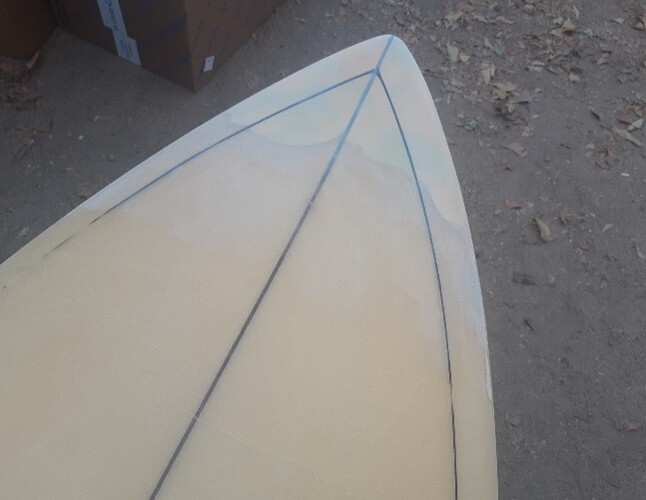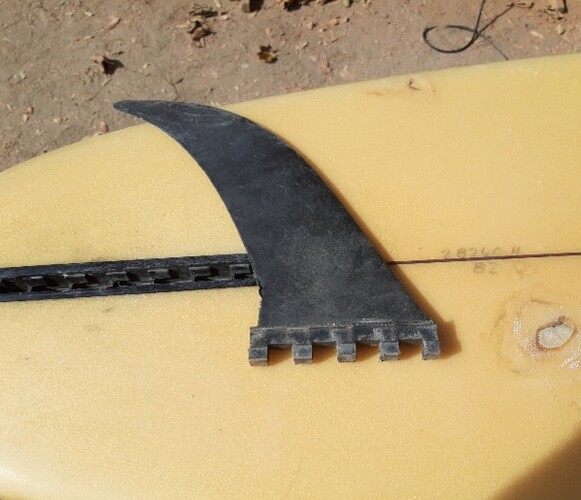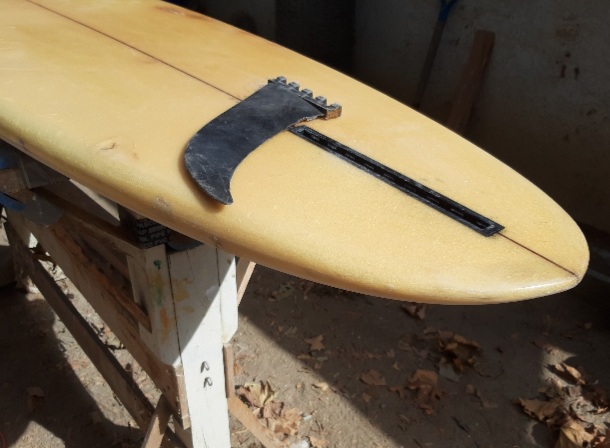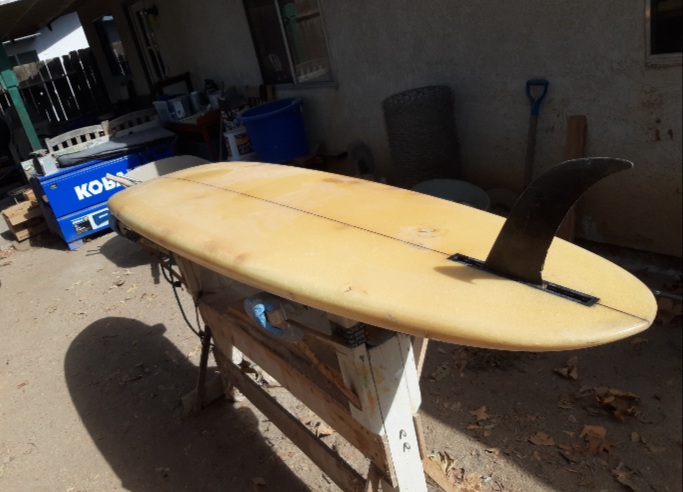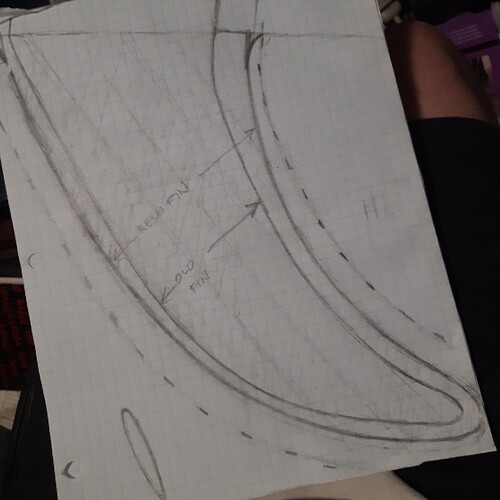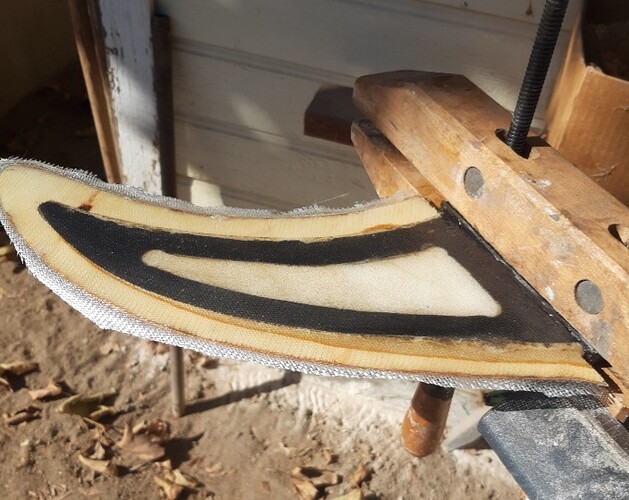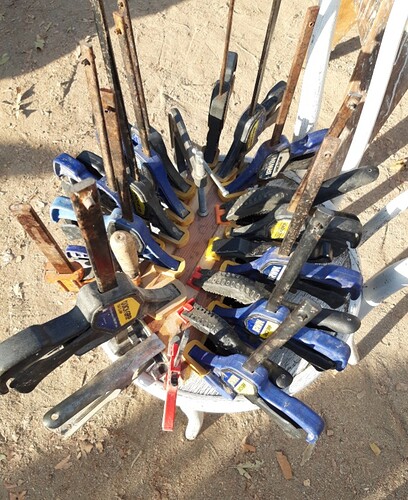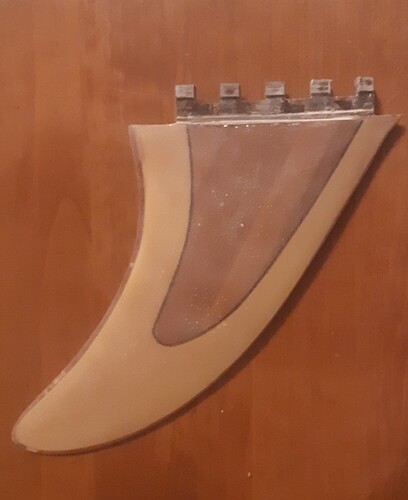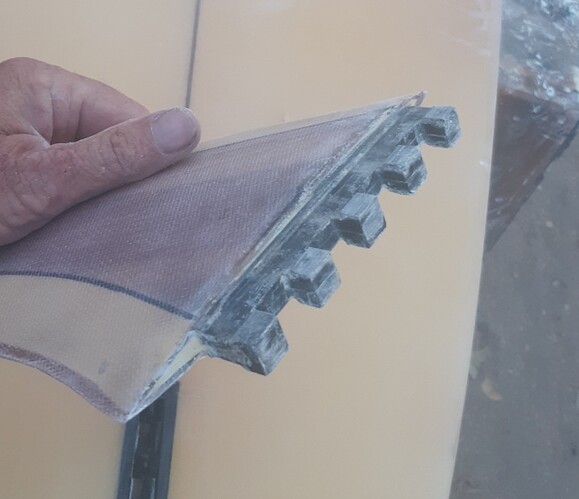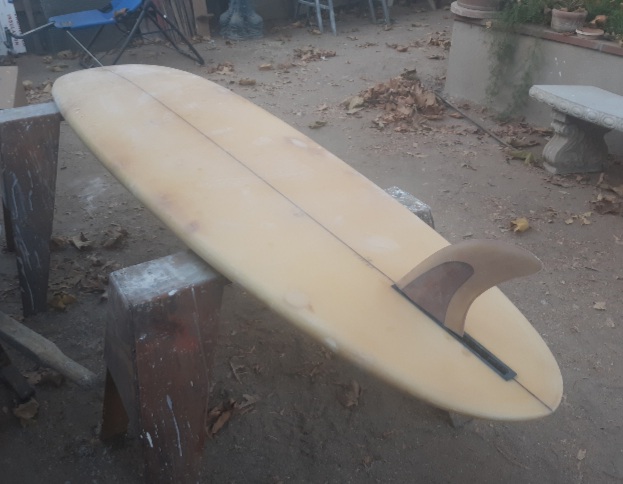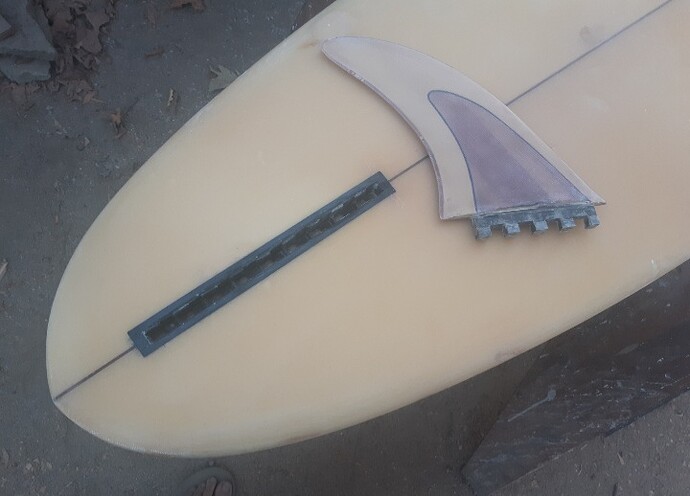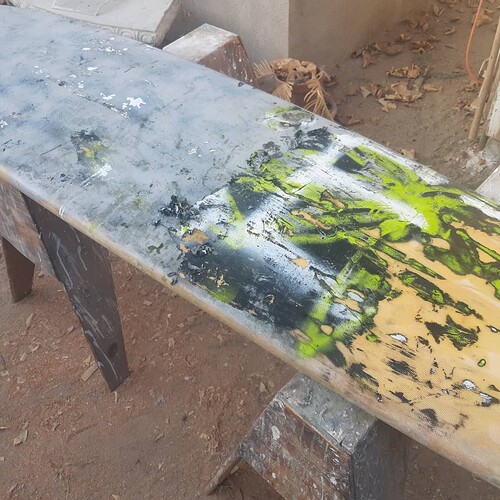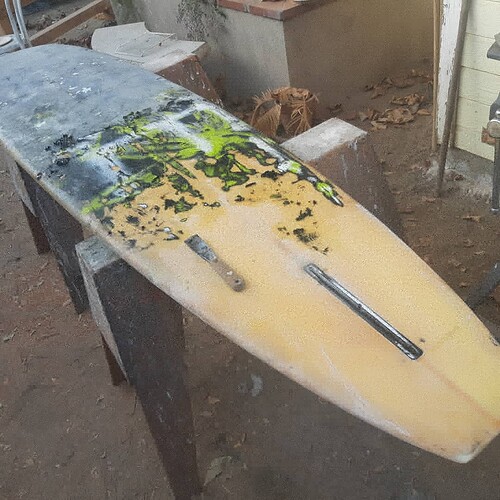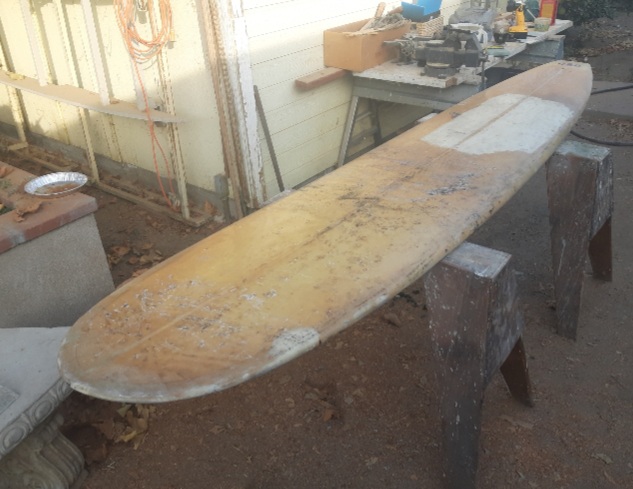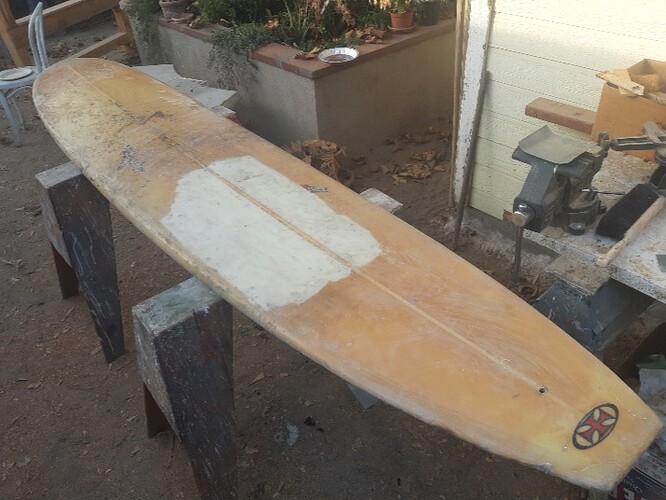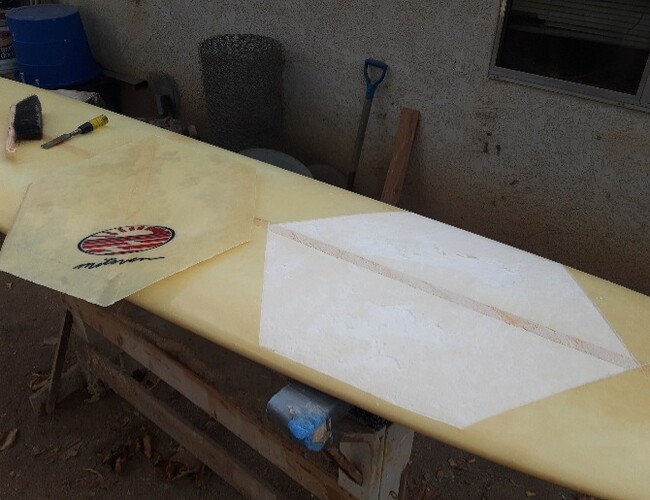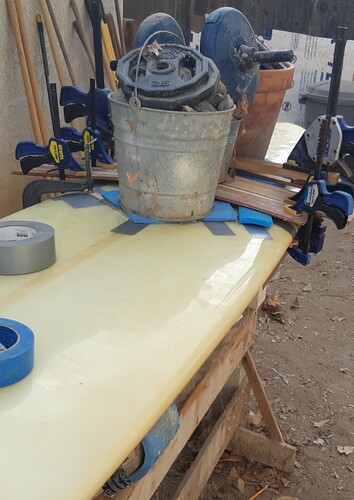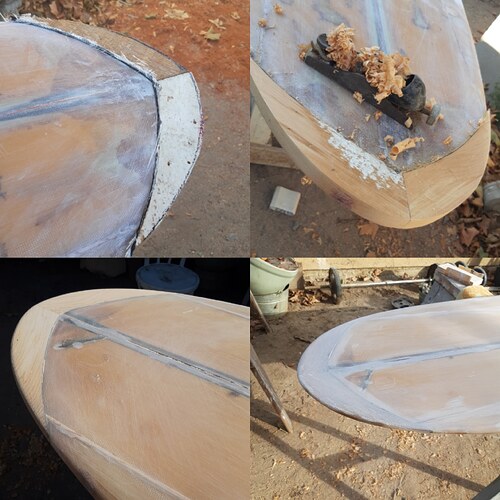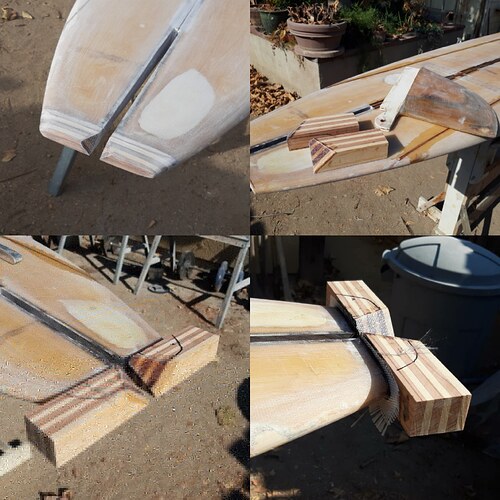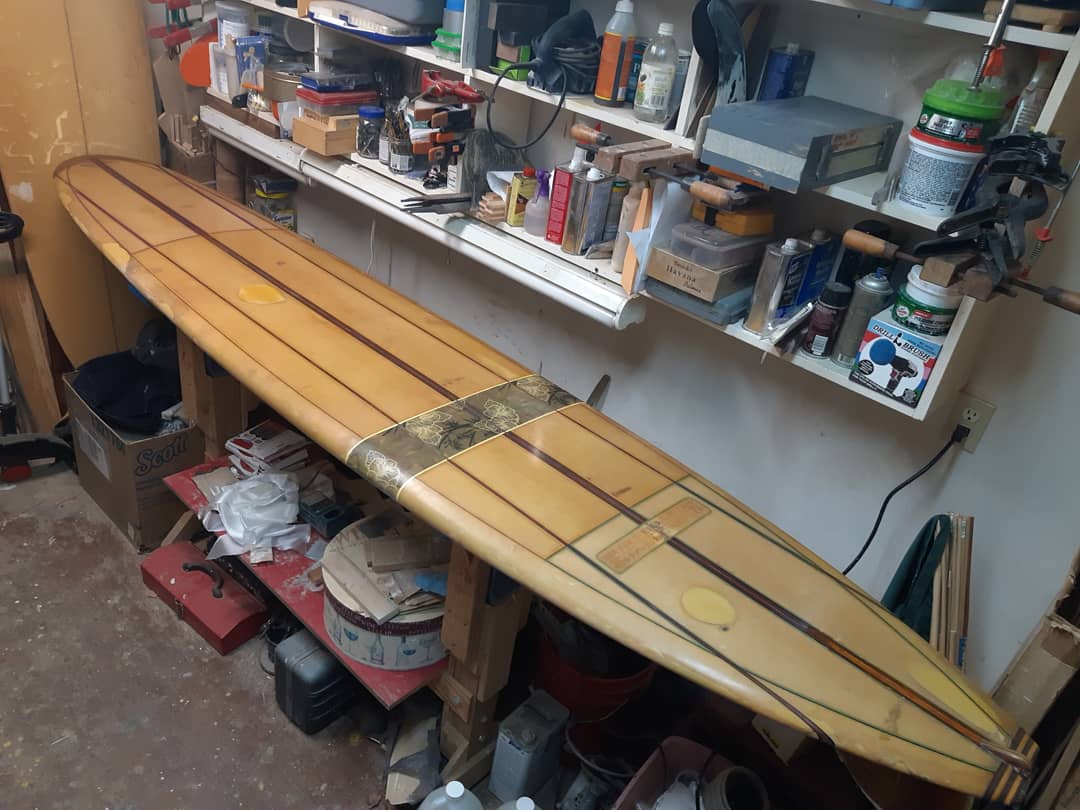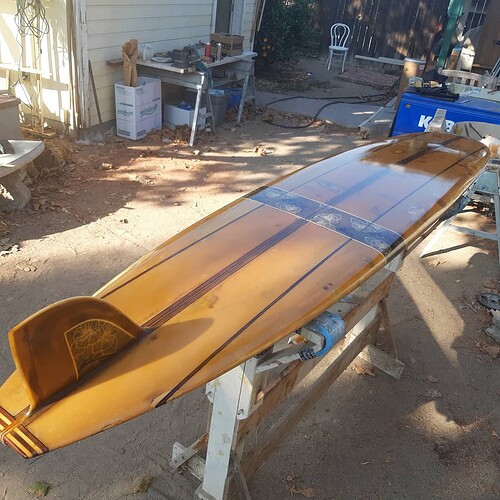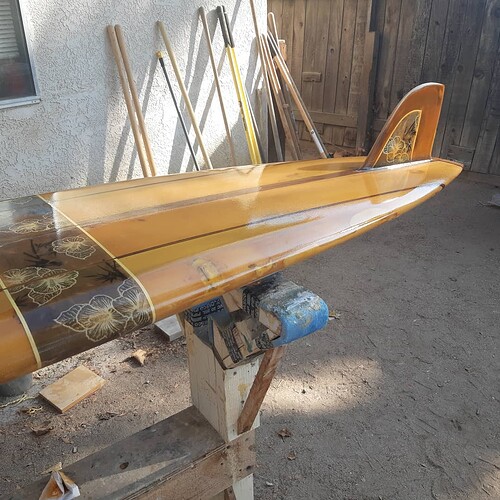I bought this old beater to fix up and ride, tackling a project that most discouraged me from attempting. Impossible, impractical, time consuming, etc. Not worth the trouble. But for me it was an education in surfboard repair, and a few other things. Definitely gotten better at color matching resin repairs, but as you can see, nothing near invisible. Which is OK with me.
I spent a few days patching dings. Then I cut off the rotted and delaminated nose, and poured resin between the foam and the delaminated glass that didn’t get cut off. I figured on a nose block, but the delam was big, and you can only go so big on a nose block before it doesn’t look right.
I cut off the tail block and the damaged fin.
I cut the board lengthwise into 4 pieces, hollowed them out (chambered) and filled with lightweight foam glued in with gorilla glue.
I made up some stringers from 1/8" thick by 1 1/2" wide strips of redwood ripped on a table saw, and glued the sections back together with the new stringers to compensate for the width of the cut.
There was some unanticipated distortion, maybe from the expanding gorilla glue, or maybe from other reasons, and the pieces didn’t fit back together just right. Extra work with sandpaper and filler, or fiberglass strips as filler in some cases. Pain in the butt, but I got through it.
Built a new fin from plywood, with a wood leash loop attached. Built a new tail block. Built a wood nose block. The leash loop is not period correct, but could be cut off, along with the tail block, and a new tail block added easily enough. Or the old one could be put back, I still have it.
Sanded everything again, lots of sanding, and added painted pin stripes. Then glassed with 4 oz. glass and epoxy resin. My aesthetic tenets were to preserve the orginal patina as much as possible, whenever possible. No solid pigment (or paint) panels or rails. I added a band where there originally had been a band, although mine was fabric inlay and the original likely was painted. I made an effort to keep my fin, nose block, and tail block from looking too new, I wanted them, like my ding repairs, to blend in.
The board came to me heavy, at 30 lbs. I figured to add at least 2 - 3 lbs. with all the repairs and the re-glassing it needed. So without chambering I figured to end up at 32 - 33 lbs. With chambering, and lots of sanding, I am on track to finish up at 27 lbs., a period correct final weight. Still heavy, but better than 32 lbs. So 3 lbs. lighter than I started with, and about 5 lbs. lighter than if I hadn’t chambered.
I don’t recommend chambering to lose weight on an old foam board, because its lots of work, its tricky, and the weight loss isn’t great. But having said that, I do plan on doing it to at least 2 more old boards that were headed for the landfill or the garage rafters, that I bought just for this purpose. Hoping to learn more, to get better at it, to see if I can lose more weight, and get two more very old boards back into rideable condition. To me, the weight loss from chambering is the key to the whole process, without it I wouldn’t attempt to make the boards rideable, because they would be too heavy for me to enjoy riding.
Hoping to get this finished up and into the surf this week if all goes well. And will post up some better pics once its completed.
